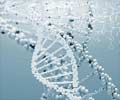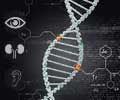Highlights
- A newly discovered biomarker associated with Mucopolysaccharidoses (MPS), a family of rare genetic disorders has been identified.
- The biomarker may help in the diagnosis //of the disease.
- Also, drug development and clinical trials might be possible by using the biomarker as a target for treatment.
Mucopolysaccharidoses (MPS)
In the United States 1 in 25,000 births results in some form of MPS. Life expectancy varies significantly for people with MPS, but individuals with the most severe form rarely live more than 10 years.
Deficiency of the key enzyme IDUA needed to break down complex sugars in cells can lead to MPS I, the most common form of this group of diseases. The disorder eventually leads to the abnormal accumulation of sugar fragments and cell death.
Bone marrow transplantation and intravenous enzyme replacement therapy are the two treatments given for the disease; however, neither of these treatments cure the disorder, especially when the disease enters the central nervous system.
Many of the individual MPS disorders share symptoms, such as vision and hearing problems, hernias, and heart problems.
What are the Symptoms of Mucopolysaccharidoses?
Symptoms may be mild, moderate or severe depending on the type of MPS. All individuals do not present with mental retardation or developmental delays. There is a common cluster of symptoms occurring across clinical types and subtypes of MPS:
- Facial features like flat nasal bridge and thick lips
- Dysplasia or abnormal bone size or shape
- Hearing loss
- Corneal clouding and vision impairment
- Hydrocephalus (fluid in the brain)
- Developmental delays and mental retardation
- Enlarged organs like heart, liver and spleen
- Respiratory issues and Heart diseases
The ODC team screened metabolites from cerebrospinal fluid (CSF) in a canine model of MPS I. This assay revealed a marked elevation of a compound called spermine in affected animals. Gene therapy to reduce CSF spermine corrected brain lesions in these dogs.
Additional studies in cultured neurons from MPS I mice showed that elevated spermine was responsible for the abnormal overgrowth observed in the mouse cells.
In humans, spermine is elevated in the CSF of four MPS subtypes in which cognitive declines are seen, but not in two subtypes in which cognitive function is preserved. In MPS I patients, elevated CSF spermine was restricted to patients with genotypes associated with CNS disease.
CSF spermine in these patients was reduced following hematopoietic stem cell transplantation -- the only therapy currently capable of improving cognitive outcomes.
"Our findings offer new insights into CNS symptoms in MPS patients," said first author Christian Hinderer, MD, PhD, ODC Research Director.
"These studies suggest CSF spermine could be used as a biomarker to evaluate the outcome of novel therapeutics designed to treat the CNS manifestations of MPS diseases, which will greatly simplify clinical trials."
"We are offering access to this biomarker to the orphan disease research community for all research purposes at no cost to enable labs to freely conduct assays for their own research and patients' needs. The only way we will move ahead in our field is to openly collaborate in the pre-competitive space, during the early stages of development of biomarkers and treatments."
Reference
- Christian Hinderer et al., New biomarker found for group of rare metabolic diseases, Human Molecular Genetics (2017).
Source-Medindia
















